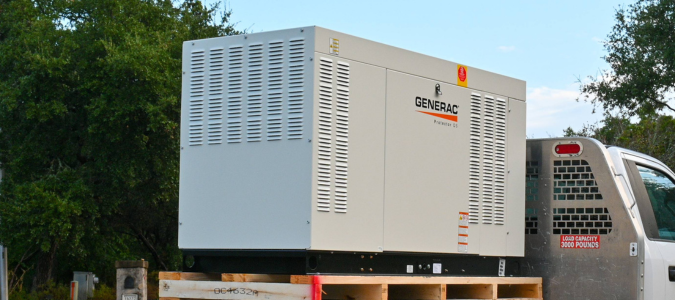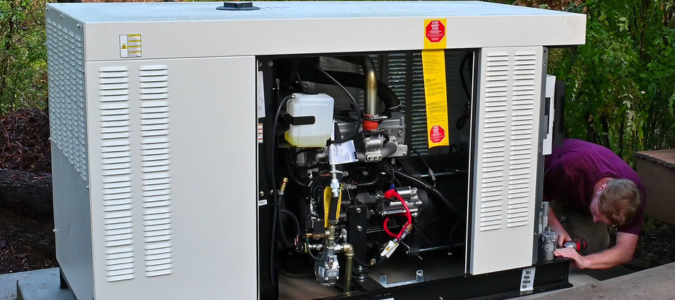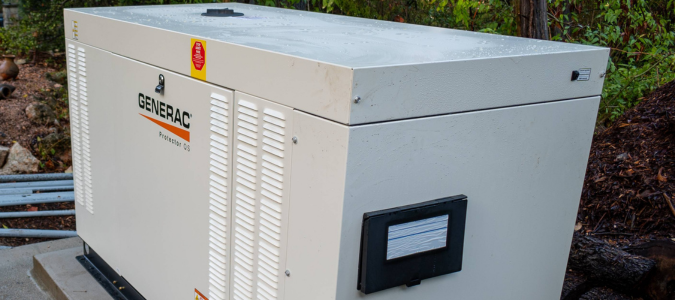When the power goes out, a standby generator can feel like a lifesaver. These machines offer peace of mind during outages, but like any mechanical system, they need a little attention to stay reliable.
A standby generator can run continuously since it typically runs on natural gas. While standby generators are designed to run as long as they have fuel, it is important to remember that they are not invincible. They require regular maintenance to keep working without breaking down.
Let’s take it one step at a time and answer these questions: How do generators work? How long can a generator run safely? How can you get the most out of them?
How Long Can a Generator Run: Getting the Most Out of Your Generator
If you reside in a place with unreliable power grids, it’s smart to prepare for extended periods without power. Many homeowners choose a standby generator, which offers longer running times and reliable performance. Standby generators can operate indefinitely with a continuous fuel supply, making them great for long-term power outages.
Understanding Your Energy Needs
First, it’s important for homeowners to understand their daily energy needs when determining how long their generator can run. Put simply, this is like the energy budget your generator must produce to power your appliances, fittings and gadgets efficiently. It is determined by looking at the appliances connected to power, the duration of power or use of those appliances and fuel consumption.
The fuel tank size determines the generator’s run time, especially when using propane. The availability and type of fuel stored in fuel tanks directly affect the generator’s operation during power outages. Additionally, the role of a gas line in powering whole home generators is vital, as it provides a reliable continuous fuel supply during power outages.
To determine the right size generator for your home, you will need to consider the maximum power the generator can produce, the average load it is operating under and the duration of operation.
Factors affecting generator run times, recommended limits for safe operation and the importance of fuel sources are essential considerations. Maintaining generators to ensure they are running properly is crucial, with specific maintenance tasks like checking the engine oil daily with continuous use.
Most standby generators can run indefinitely with a steady fuel supply, making them suitable for extended power outages. Standby generators using natural gas can operate indefinitely if connected to a natural gas line. The natural gas line serves as a continuous fuel source, allowing standby generators to operate without refueling during power outages.
A standby generator can run indefinitely with a continuous fuel supply, but regular maintenance is essential, and manufacturers typically recommend limiting continuous operation.
If you want your generator to perform at its best, it’s best to consult a professional electrician. They can also answer generator questions, like “How are generators powered?”
Can You Run a Generator Too Long?
Theoretically, a generator should run as long as it is connected to a fuel source. However, most generator breakdowns are linked to pushing the generator too hard.
For instance, if your home is a typical family dwelling, you’ll likely be running your standby generator to power essential loads like the refrigerator, water heater, microwave oven, one or two AC units and an HVAC blower. While an average standby generator can handle these appliances for up to 3,000 hours, manufacturers advise turning it off daily to check oil, inspect for any fuel and/or oil leaks and clear any debris from enclosure vents.
Overworking your generator is not just about fuel consumption but rather stretching past its comfortable limit. A professional electrician will consider all these considerations to recommend a generator that will comfortably serve you.
What Happens If You Overload a Generator?
Overloading a generator means stretching it past its capacity. An overloaded generator can burn its internal parts and damage home appliances. This is why it’s helpful to spot the signs of a generator overload early and have these issues fixed before they worsen.
Below are some of the common aftermaths of generator overloading:
- Decline in power output
- Overheating
- Obvious soot in the exhaust
Let’s examine these issues a bit more.
Decline in Power Output
A sudden drop in power output is a common sign of overload. Although it has many telltale signs, overload is usually accompanied by flickering lights, weakened lights and the interruption of connected devices.
Overheating
You can easily tell when your generator is overheating. You may hear screeching sounds when this happens, feel extra heat from the engine or see the fan blades running faster than usual.
Obvious Soot in the Exhaust
A black exhaust is relatively normal due to carbon combusting in your generator engine. However, it becomes a problem when it develops into soot residue. The soot residue can lead to poor filtering and clogging in the generator’s exhaust system.
While these signs will alert you of an urgent stretch to your generator’s capacity, they may not be obvious quickly. Sometimes, generator overloading can happen in stages and gradually deteriorate the lifespan of your generator. Don’t wait to see a major issue before calling in professional help.
This is another reason why it is important to answer the question, “What size of generator do I need?“ before buying one or adding extra appliances.
Get Help From a Licensed Electrician
Whether you’re planning to invest in a standby generator or want to maintain the one you already have, get help from a licensed electrician. You only need to provide details of your electricity needs, and the electrician will recommend the best solution that fits your budget.
ABC Can Install Your Home Generator
If you’re interested in having a standby generator in case of power loss, ABC can help. Our experts can help with standby generator installation and help you decide which one is right for your home and needs. They can also help with any other electrical issues you may be having.



